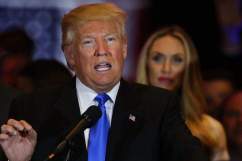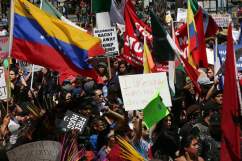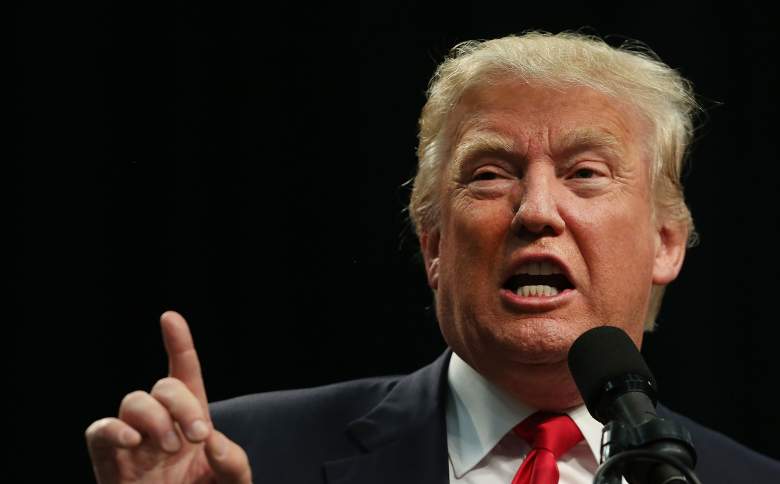
(Getty)
One of President Donald Trump‘s plans that grabbed the most attention during his campaign was building a wall along the U.S.-Mexico border in order to stop immigrants from coming into the country illegally. Since becoming president, Trump has not backed down from the plan, which has already frayed the U.S.’ relationship with Mexico. Now, he is endorsing a 20 percent tax on Mexican imports to pay for the wall.
Reuters reports that Trump’s team requested on December 5 that the Department of Homeland Security for documents and analysis of what will be available to build his wall. The team also wanted to know if the department could expand immigrant detention facilities and build up an aerial surveillance program.
According to Reuters, U.S. Customs and Border Protection staff responded to the request, showing that a wall could be built along 400 miles of the U.S.-Mexico border.
Here’s what you need to know about Trump’s plans for building a wall, especially now that he is going to be the next president.
1. Trump Wants Mexico to Pay for the Wall & Supports a 20 Percent Tax on Mexican Imports to Pay for it
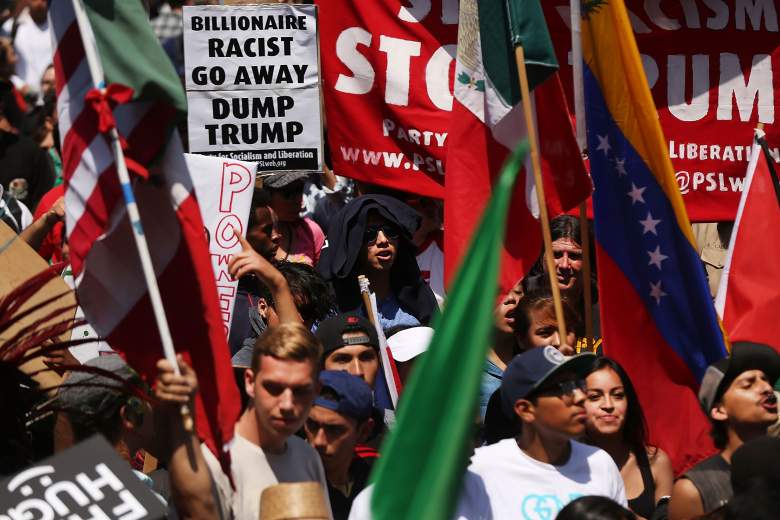
Demonstrators at Trump’s San Diego rally (Getty)
Trump has repeatedly said that Mexico will pay for the wall. In a statement on his website, Trump’s team says that the wall will cost $5-10 billion to build and Mexico will submit a one-time payment. The site also lists a few ways to make Mexico pay that, including cancelling visas, adding visa fees and enforcing trade tariffs. Trump says that the U.S. will not contribute to paying for the wall at all.
Trump’s statement concludes:
Mexico has taken advantage of us in another way as well: gangs, drug traffickers and cartels have freely exploited our open borders and committed vast numbers of crimes inside the United States. The United States has borne the extraordinary daily cost of this criminal activity, including the cost of trials and incarcerations. Not to mention the even greater human cost. We have the moral high ground here, and all the leverage. It is time we use it in order to Make America Great Again.
On August 31, Trump met with Peña Nieto and said he didn’t discuss payment of the wall, but Peña Nieto disputed that on Twitter. Peña Nieto wrote that they talked about the wall and he insisted that Mexico will not pay for it.
On January 26, Trump Press Secretary Sean Spicer told the New York Times that Trump supports a 20 percent tax on annual Mexican imports to raise $10 billion to pay for the wall.
“By doing it that we can do $10 billion a year and easily pay for the wall just through that mechanism alone. That’s really going to provide the funding,” Spicer told the media, CNN reports.
Spicer’s comments came after Mexico’s president cancelled a meeting with Trump after the President signed an executive order to start the wall-building process. He again insisted that Mexico will pay for the wall, but Mexican officials have said they will not.
NBC News’ Peter Alexander tweeted that Spicer clarified his remarks, stating that this is only an example of possible options for paying for the wall.
2. Trump Has Said That the Wall Will be 35-40 Feet High & 1,000 Miles Long
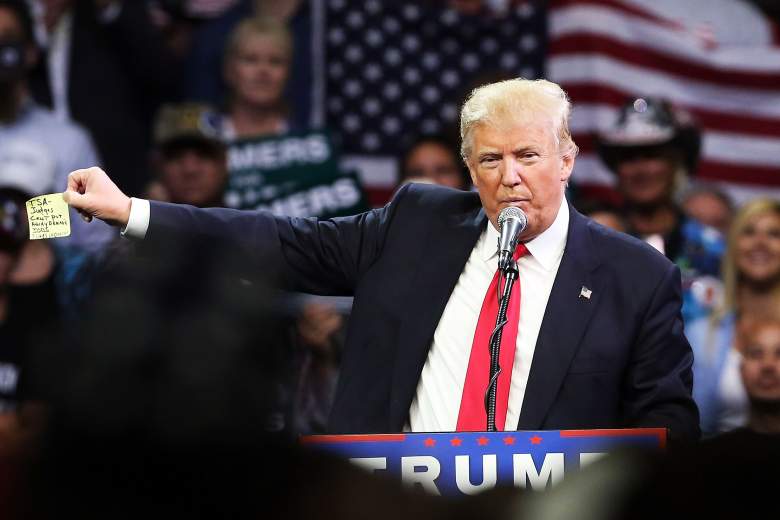
Trump in Fesno (Getty)
In an interview with MSNBC in February, Trump said that the wall will only have to be 1,000 miles long because of natural barriers. That’s about half the length of the U.S. border with Mexico. In that same interview, Trump said that the wall will cost $8 billion and will be 35-40 feet high.
Trump said that that the wall will not have to be anywhere near as long as the Great Wall of China, which is 13,000 miles long.
Trump told MSNBC:
What we’re doing is we have 2,000 miles, right? 2,000 miles. It’s long but not 13,000 miles like they have in China. Of the 2,000, we don’t need 2,000, we need 1,000 because we have natural barriers … and I’m taking it price per square foot and a price per square, you know, per mile.
As Fox News reports, Trump described his wall as “impenetrable, physical, tall, powerful, beautiful” during his immigration speech on August 31.
3. Former Mexican Presidents Vincente Fox & Felipe Calderon Hate the Idea
Two former Mexican presidents have slammed Trump’s idea, with Vincente Fox’s comments even earning a response from Trump. In an interview with Univision in February (seen above), Fox said, “I’m not going to pay for that f***ing wall.”
In a debate just after Fox’s interview, Trump said that the wall “just got 10 feet taller,” reports ABC News.
In an interview with CNBC, former Mexican President Felipe Calderon said that Mexico won’t pay a “single scent for such a stupid wall.” Calderon also said it would be “completely useless.”
On September 26, Trump compared his planned Mexico border wall with what Israel built along the 1949 armistice lines. It runs 440 miles, much shorter than the 2,000-mile border along the U.S. and Mexico. The Trump campaign told the Guardian that Trump met with Israeli Prime Minister Benjamin Netanyahu and discussed “at length Israel’s successful experience with a security fence that helped secure its borders.”
4. There Are Over 11 Million Illegal Immigrants in the U.S.

Supporters in San Diego (Getty)
According to Pew Research, the 2014 population of illegal immigrants in the U.S. was estimated at 11.3 million, making up 3.5 percent of the population. This is a decrease from the 2007 peak at 12.2 million in 2007. Pew found that 49 percent of unauthorized immigrants come from Mexico, or 5.6 million.
However, four of the six states with 60 percent of the illegal immigrant population do not border Mexico. They are Florida, Illinois, New York and New Jersey. The other two are California and Texas. As of 2014, Nevada has 8 percent of the illegal immigrant population, the largest share of any single state.
Tougher enforcement at the border has already lead to a decrease in the number of illegal immigrants from Mexico. According to Pew Research, 315,000 Mexican immigrants were deported in 2013. A Migrant Policy report notes that there is already a zero-tolerance policy at the border that discourages migrants from trying to re-enter the country after being deported.
5. Border Patrol Union’s Endorsement Caused Controversy Among Officials at the Border

Donald Trump speaks to supporters at a rally in Billings, Montana. (Getty)
In March 2016, the billionaire scored a major endorsement from the National Border Patrol Council (NBPC), a union representing U.S. Border Patrol agents. Trump finally got around to thanking the group on Twitter in May. On August 31, 2016, Trump gave a speech on immigration, just after meeting Mexican President Enrique Peña Nieto, and insisted that the wall is still going to be built if he wins in November.
The NBPC, which represents 16,500 agents, said in a statement to Brietbart:
There is no greater physical or economic threat to Americans today than our open border. And there is no greater political threat than the control of Washington by special interests. In view of these threats, the National Border Patrol Council endorses Donald J. Trump for President – and asks the American people to support Mr. Trump in his mission to finally secure the border of the United States of America, before it is too late.
On Twitter, Trump thanked them for the endorsement, which was the first the group had ever issued for a presidential candidate.
While the NBPC has defended its endorsement of Trump, the Los Angeles Times found out earlier this month that it has caused some within the union to think that it will spark a negative viewpoint of all agents. Some agents in El Paso, Texas even asked their local union to not back Trump, but that failed in a tight vote.
“It is probable that the endorsement of Mr. Trump would expose both the union and the individual members to accusations of xenophobia and even racism,” Don McDermott, who previously supervised a San Diego anti-smuggling unit, told the LA Times.
“I think Border Patrol agents will be tough on enforcement but very generous in terms of empathy and how they take care of those that are in their custody,” NBPC vice president Shawn Moran told the LA Times, shrugging off concerns that the endorsement hurts agents.
